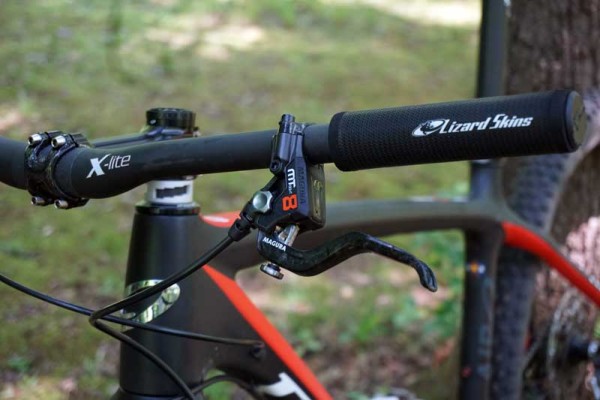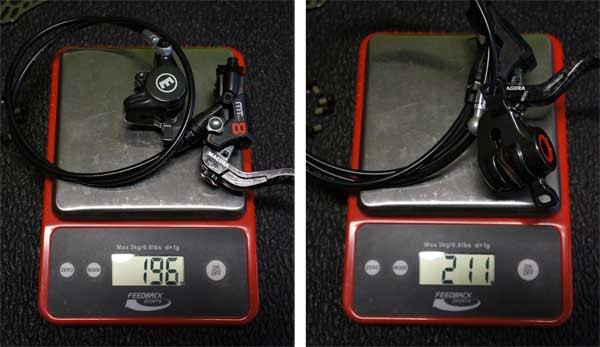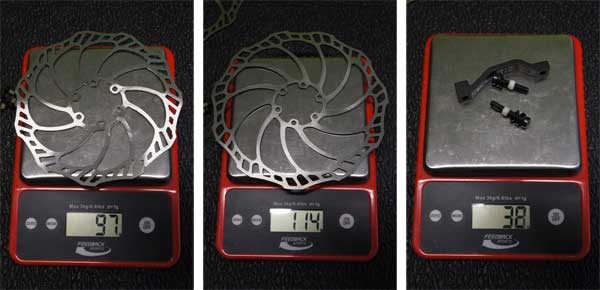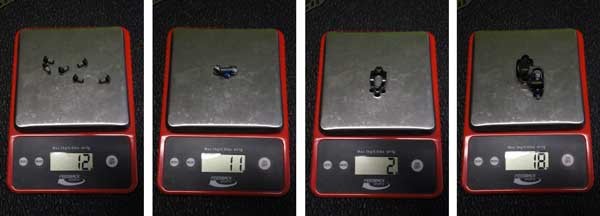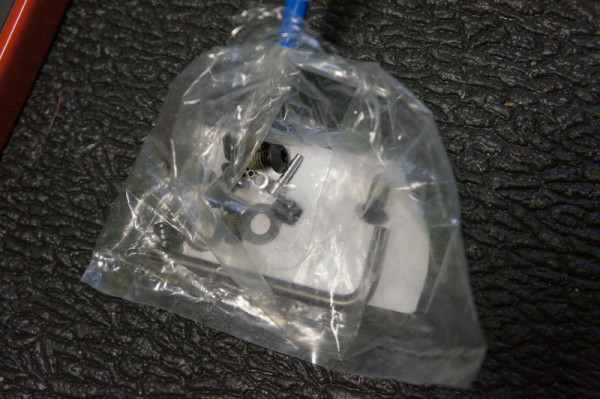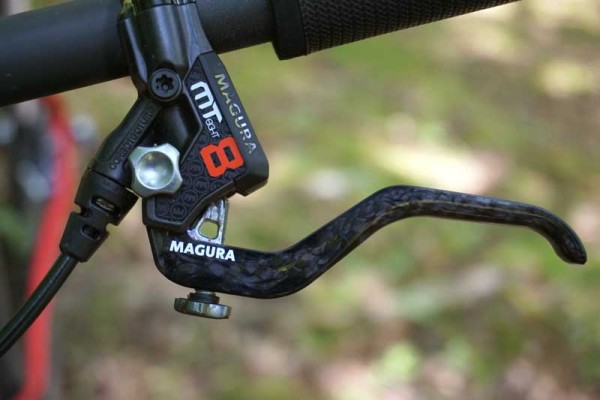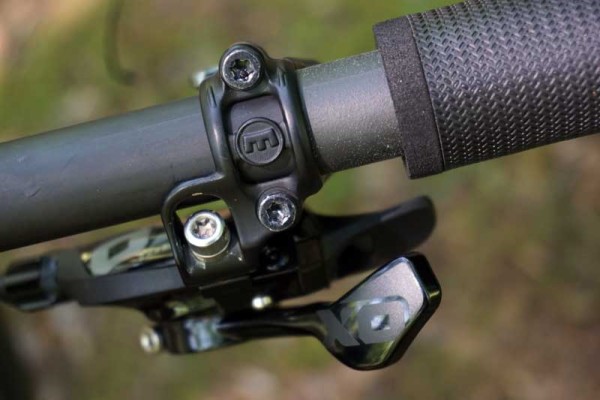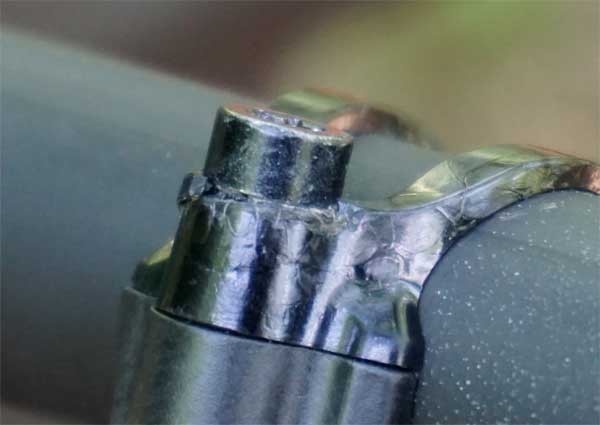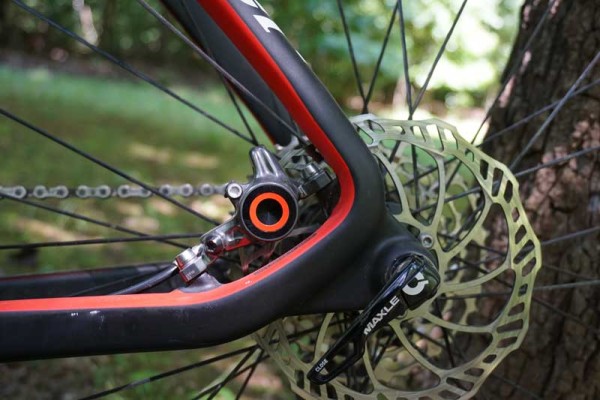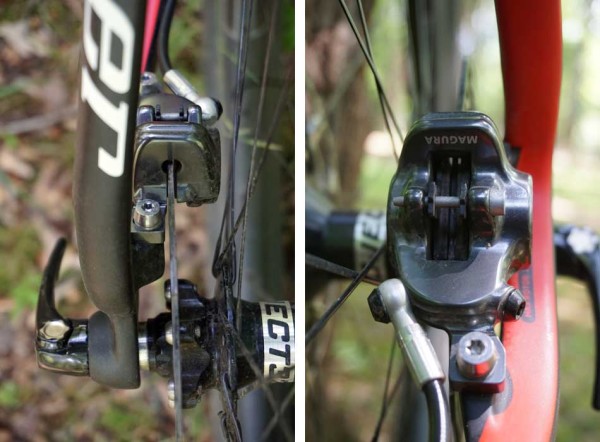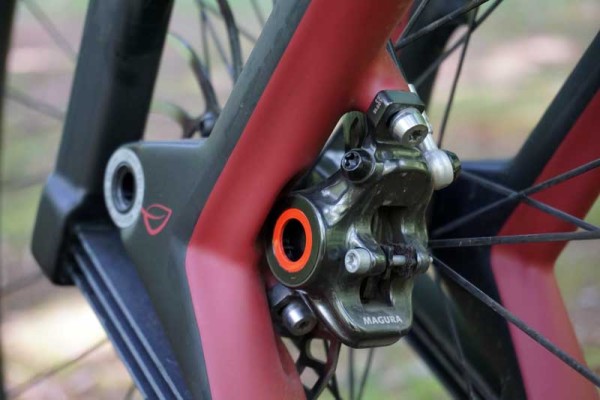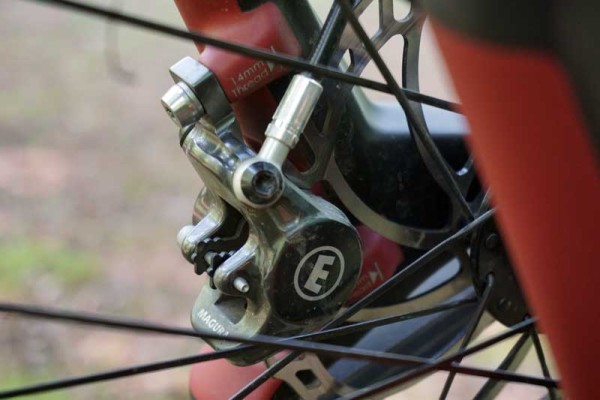Other than a new short-reach brake lever option for Magura’s updated MT-series brakes, they are mostly unchanged from their launch last year. Zach offered up first impressions from the camp and has since complemented the quad-piston MT7 brakes’ power in his review. Meanwhile, I’ve been testing the two-piston MT8 brakes, which are a decidedly more cross country oriented set of stoppers.
At first, these brakes were on my Niner JET9 full suspension bike, where they received their first six months of testing. Then, I moved them to Project XC Race Rocket, which was a much better fit…
The calipers came with the hoses precut to length for a Niner JET9, which I originally had them on, so they’re just a bit long for the AIR9 but not too bad. Actual weights were 196g (front) and 211g (rear).
160mm rotors came in at 97g, 180mm rotors were 114g. The Lauf fork on this project bike require a 180mm front, otherwise I’d have run 160mm all around. The included spacer hardware and bolts are 38g if you need them.
Rotor bolts are 12g, lever mounting bolts are 11g, the stock carbon fiber lever mounting clamp is just 2g, and the optional SRAM shifter adapter clamp is 18g. The latter is all but required to get good spacing on the bar with a SRAM shifter, otherwise, the levers tend to be pushed too far inboard, meaning you’re left to do pointer finger braking only, and not really in an ideal position on the lever. Or, your shift levers are pushed well into your hands’ personal space, which can cause the thumb shift lever to constantly bang into your thumb. So, my recommendation is to use the SRAM adapter if you’re running SRAM shifters.
The brakes ship with a bag full of hardware to ease installation. It includes the small bits necessary to re-tap the ends of the hoses if you need to shorten them.
DETAILS & FEATURES
The entire lever and master cylinder unit is composite, which saves considerable weight seemingly without affecting durability or braking power thanks to a long-strand carbon fiber reinforced thermoplastic blend. Before installing these, I ran the prior generation MT8 brakes and have had the usual assortment of small wipeouts. No glorious yard sales down a mountain, but enough to test the brakes’ ability to take a hit or three. Both generations have held up just fine to normal wear and tear.
The MT8 levers get tool free adjustments for reach and pad contact. The reach does what you’d suspect, dialing the lever closer to or further from the bar to fit the size of your fingers. The other knob is for their “Bite Contact”, which adjusts how much free stroke there is in the lever before the pads make contact with the rotor. Call me old fashioned, but I like things to happen when I pull the lever, so I left it alone and minimized any free stroke.
As mentioned above, the SRAM adapter makes for a much more ergonomically friendly cockpit. Without it, the shifter’s clamp forces one or the other to sit very far inboard, resulting in less-than-ideal placement for either your brake lever or your shifter lever. I’ve only run Magura’s brakes with SRAM shifters, though, so can’t comment on how well they fit with Shimano parts.
My bike’s set up with a single front chainring, so I got to use the ultralight full carbon clamp on the left. It’s beautiful and simple, but you don’t want to over tighten it:
This is what happens when you don’t use a torque wrench. So far it’s held just fine – I stopped the instant I heard and felt any cracking. It hasn’t propagated or worsened, but still…use a torque wrench.
The dual piston calipers are sleek, with a glossy dark gray that matches well with current generation SRAM and Shimano parts, particularly the high end stuff. The bright circles stand out in a good way, and you’ll get a fluorescent yellow ring (two of ’em!) if you opt for the quad piston MT5/7 brakes.
The bleed port is conveniently located on the outside of the caliper, pointing straight out. The banjo that connects the brake hose to the caliper can be rotated, and that slight tilt should help the hose line up well regardless of whether your frame runs it on top of or on the inside of the chainstay.
Brake pads are secured by a small bolt and magnets on the pistons. Pad wear is up to snuff, with plenty of material remaining after a year of use (keep in mind, I’m riding numerous bikes at any given point, so you may wear them out quicker).
LONG TERM PERFORMANCE REVIEW
Having ridden the older MT8s and being very happy with them, these actually took a bit of time to get used to. It’s not that they’re so different, it’s just that between riding the older ones and these, I’ve spent a lot of time on SRAM’s Trail and Guide brakes on my other bikes and plenty of Shimano brakes on demo bikes.
And those brakes are very different, in different ways. SRAM’s new stoppers are world class – they’re light and very strong, which is to be expected with a quad-piston caliper. They also have excellent modulation. Shimano’s brakes are also quite powerful, but they come on much stronger (ServoWave!)
Normally, I try not to make direct comparisons to competing products in my reviews, but in this case I believe it’s going to be helpful in explaining why these brakes are good when they’re competing against other top performers.
The SRAM Guide RSC brakes hit the scales at 241g & 259g (as measured in our office), which are a good bit heavier than the MT8s but also more powerful. Shimano’s XTR M9000 Race brakes have a claimed weight of just 197g and 211g, which is virtually identical to the MT8s, but the first generation of these new models have suffered from irregular brake pump (I experienced this on my own rides with sustained descents and heard it from other editors. Unofficially, we’ve heard from a very good source there will be running changes to piston and/or caliper materials to address this, but it is very unlikely to be a formal announcement from Shimano).
Where the MT8 brakes win in this equation is that they’re as light as XTR but (in my opinion) have better modulation and more consistent performance. Compared to the Guide brakes, they’re much lighter and have adequate stopping power. And I use the word “adequate” on purpose. On bigger bikes or fast descents, I’d choose the Guides or perhaps the MT7s that Zach reviewed. But for an XC bike like this, they’re perfect. The rear end doesn’t easily lock into a skid, which means more controlled deceleration around the curves. That also generally means I maintained a higher overall speed, which is always good in an XC race.
Watts also gave them a test ride and had this to say:
I thought they were pretty good, actually. Good stopping. No turkey gobbling. Good modulation. Pretty close to my XT’s.
Which reminded me that yes, indeed, these brakes have been quiet the whole time.
Taking the past model’s performance into consideration and my 17 months on these, I’d recommend Magura highly for both reliability and consistency. Their performance now is as good as the day they came outta the box, and they’ve required zero maintenance. If you’re a weight weenie racer, go for these. If you go bigger, take the MT7 for a spin.
Check out the rest of the Project XC Race Rocket build here: Frame/Fork – Wheels/Tires – Cockpit – Drivetrain (coming soon)
